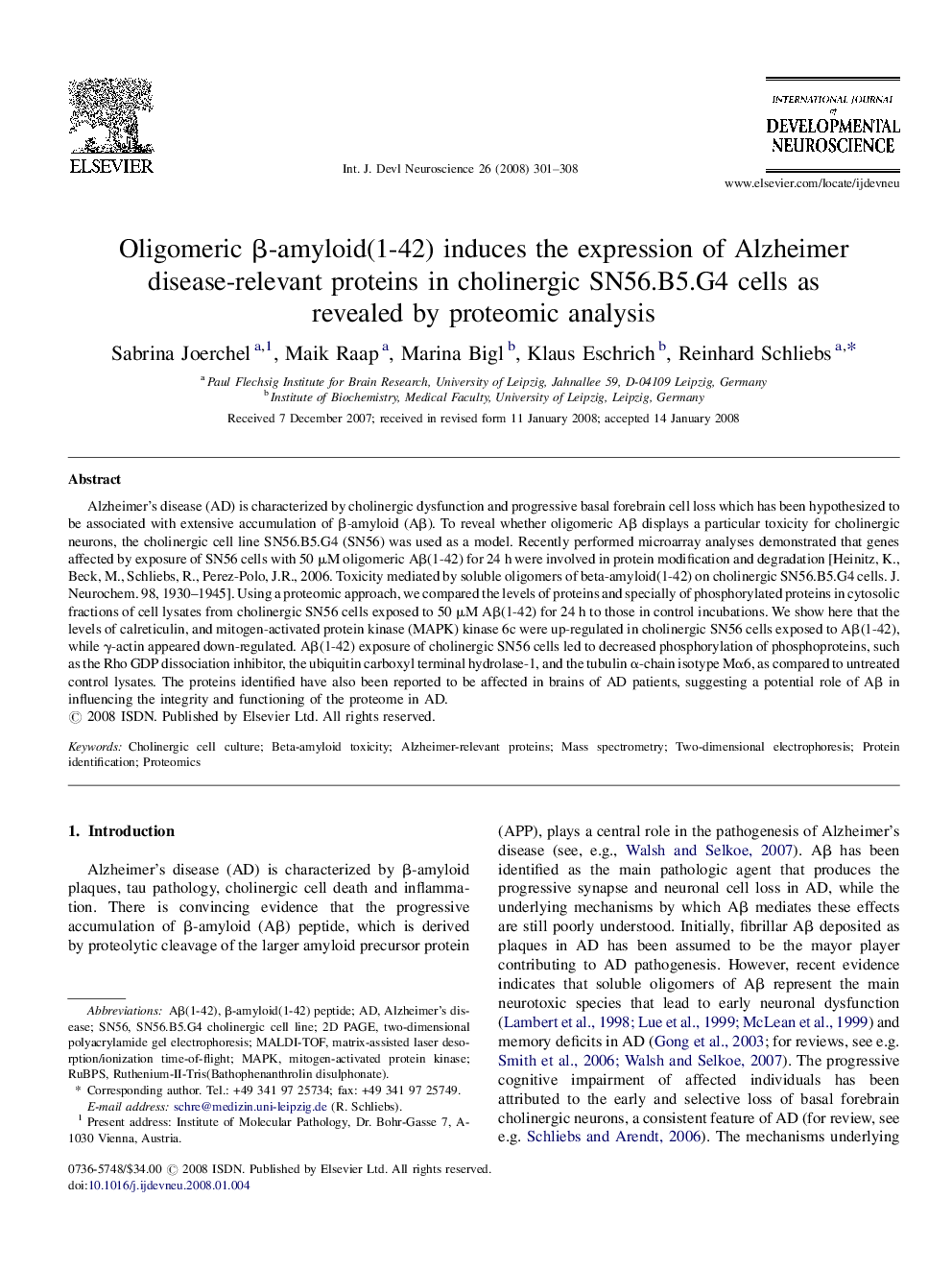| Article ID | Journal | Published Year | Pages | File Type |
|---|---|---|---|---|
| 2787044 | International Journal of Developmental Neuroscience | 2008 | 8 Pages |
Alzheimer's disease (AD) is characterized by cholinergic dysfunction and progressive basal forebrain cell loss which has been hypothesized to be associated with extensive accumulation of β-amyloid (Aβ). To reveal whether oligomeric Aβ displays a particular toxicity for cholinergic neurons, the cholinergic cell line SN56.B5.G4 (SN56) was used as a model. Recently performed microarray analyses demonstrated that genes affected by exposure of SN56 cells with 50 μM oligomeric Aβ(1-42) for 24 h were involved in protein modification and degradation [Heinitz, K., Beck, M., Schliebs, R., Perez-Polo, J.R., 2006. Toxicity mediated by soluble oligomers of beta-amyloid(1-42) on cholinergic SN56.B5.G4 cells. J. Neurochem. 98, 1930–1945]. Using a proteomic approach, we compared the levels of proteins and specially of phosphorylated proteins in cytosolic fractions of cell lysates from cholinergic SN56 cells exposed to 50 μM Aβ(1-42) for 24 h to those in control incubations. We show here that the levels of calreticulin, and mitogen-activated protein kinase (MAPK) kinase 6c were up-regulated in cholinergic SN56 cells exposed to Aβ(1-42), while γ-actin appeared down-regulated. Aβ(1-42) exposure of cholinergic SN56 cells led to decreased phosphorylation of phosphoproteins, such as the Rho GDP dissociation inhibitor, the ubiquitin carboxyl terminal hydrolase-1, and the tubulin α-chain isotype Mα6, as compared to untreated control lysates. The proteins identified have also been reported to be affected in brains of AD patients, suggesting a potential role of Aβ in influencing the integrity and functioning of the proteome in AD.
